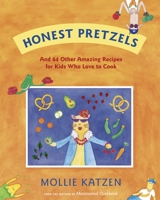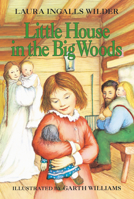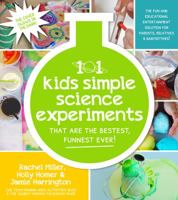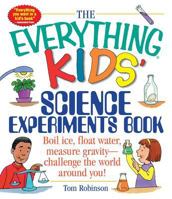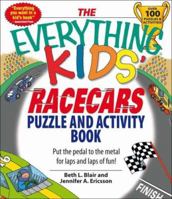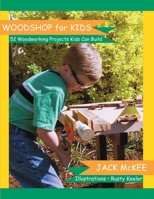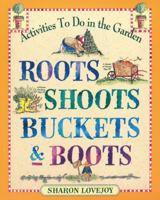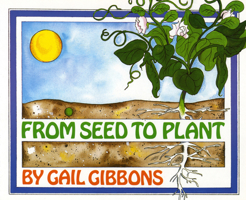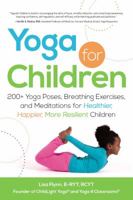Stuck at Home with Plenty to Do
Activities for Kids (and Their Parents) During the COVID-19 Crisis
By Ashly Moore Sheldon • March 25, 2020
The Coronavirus Opportunity
A lot of us are hearing these kinds of things from our kids as we try to work from home (WFH) and mitigate our own stress during this international crisis. So we've been putting our heads together (virtually, of course!) and brainstorming activities and projects to keep our young ones busy. Here are some of the ideas we're excited about.
Cooking
Kids learn a lot in the kitchen. Cooking requires the ability to follow directions and think critically. Chopping and measuring strengthen fine motor abilities and math skills. Food preparation and recipe selection helps foster creativity and cultural awareness. Honest Pretzels by Mollie Katzen, of the Moosewood Cookbook, offers 65 fully kid-tested, illustrated recipes that require only minor adult assistance for kids eight and older. For kids as young as three, try Katzen's Pretend Soup and Other Real Recipes.
From famed chef and restaurateur Alice Waters, Fanny at Chez Panisse offers 46 kid-friendly recipes and a charming view of garden-to-table restaurant life from the point of view of Waters's own seven-year-old daughter Fanny.
And for a cooking experience that doubles as an American history lesson, try The Little House Cookbook featuring recipes for foods from the Ingalls family kitchen, as well as other households from the books. Peppered with story excerpts, nostalgic illustrations from Garth Williams, and historical details about the way that pioneers lived, this book is a perfect accompaniment to the beloved frontier series.
Experimenting
Children are natural scientists. They are always asking questions of experimentation: What will happen if I push this limit? What if I mix this with that? If we provide them with actual scientific experiments to try, we might be able to avoid the chaos, mess, and accidents that sometimes occur when they are left to their own devices. From Holly Homer and Rachel Miller, pick up The 101 Coolest Simple Science Experiments and provide your youngsters with days of fun, kid-approved experimentation, like making glowing pickles and magnetic mud.
Another great option is the Everything Kids' Science Experiments Book by high school teacher Tom Robinson with dozens of mind-blowing, simple experiments like boiling ice, blowing up a balloon without actually blowing into it, and deactivating magnets. And be sure to check out the whole Everything Kids' series bringing you books on a wide variety of other diverting topics including puzzles, languages, sports, and jokes.
Building
For young engineers, builders, and makers we have some great books for simple woodworking projects. Woodshop for Kids by Jack McKee offers 52 woodworking projects designed for children aged four to twelve. From simple activities like making a top to more complex challenges like building a toy boat, there's plenty to keep little hands busy. And if you've got a pile of scraps from previous projects that you'd like to find a use for, try Derek Jones's Woodworking from the Scrap Pile with 20 small projects designed for a range of abilities, using leftover wood scraps.
Gardening
Getting outdoors is going to be more and more important in the upcoming months. How about engaging kids in an outdoor activity with structure and purpose? Gardening is physical and educational. It is also a great stress reducer and an opportunity for kids to feel they are contributing to the household. Sharon Lovejoy's Roots, Shoots, Buckets & Boots presents twelve easy-to-implement ideas for fun theme gardens (Pizza Patch anyone?) including designs, planting plans, and more.
From Seed to Plant by Gail Gibbons introduces young readers to the processes of pollination, seed formation, and germination. With accessible language and colorful, clear diagrams, the book includes straightforward scientific explanations and a fun seed-growing project to try.
Stretching
We all need our physical activity, especially kids. Yoga is a great way to work out the wiggles in a confined space. It is both calm and calming. Many of us rely on the pastime for our own peace of mind. It only makes sense that it would help our youngsters too. Breathing and stretching together is a wonderful way to start the day or to relax before bed. In The ABCs of Yoga for Kids, Teresa Ann Power introduces 56 yoga poses using the alphabet, rhyming vignettes, and colorful illustrations. Your little yogis will delight in being able to practice the poses along with you—or even all on their own.
For a more comprehensive guide to developing regular routines, try Yoga for Children by Lisa Flynn. With more than 200 poses, along with meditations, instructional scripts, and pose modifications, this book will help you and your kids find your bliss with peaceful daily practice sessions.
Sharing?
These suggestions are meant to help lighten the load of stressed and overworked caregivers as they deal with this unprecedented situation, but we know there's no one right answer for everyone. Even just amongst the ThriftBooks family, each of us is finding that we have to navigate our own way through these strange times. As always, we'd love to hear from you. Do you have any ideas to share from your household?











